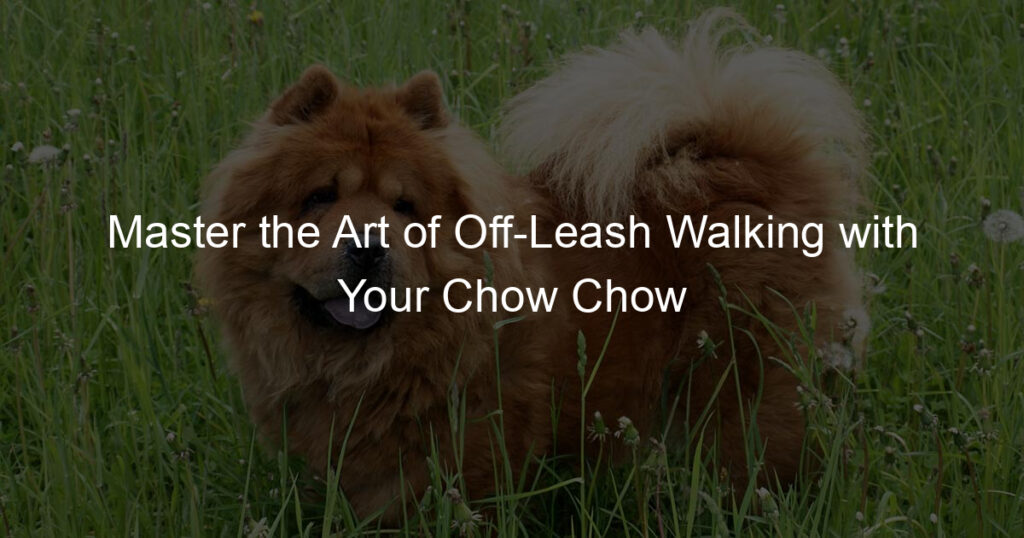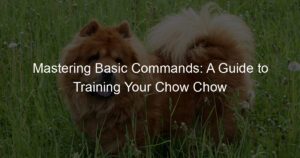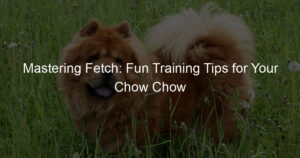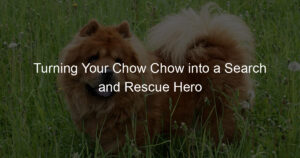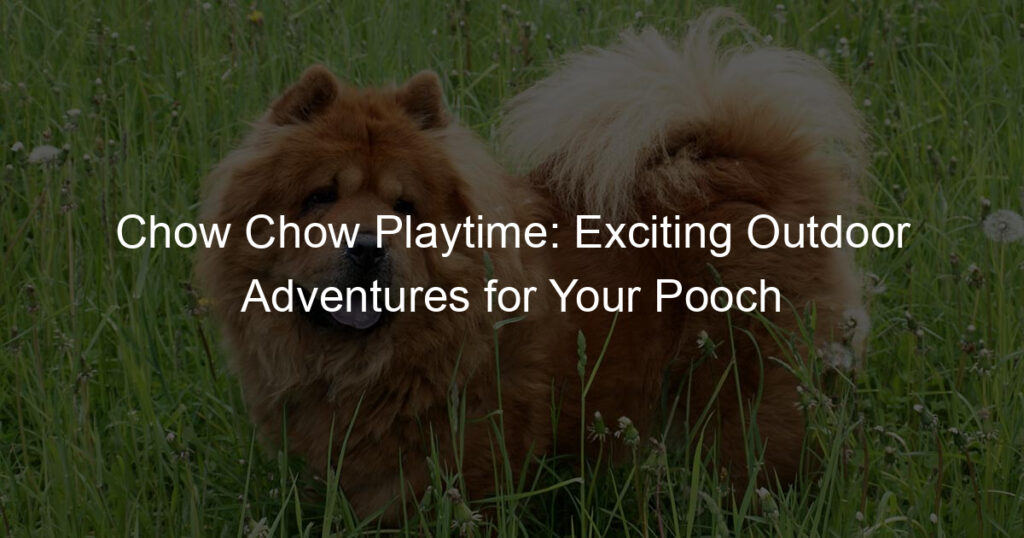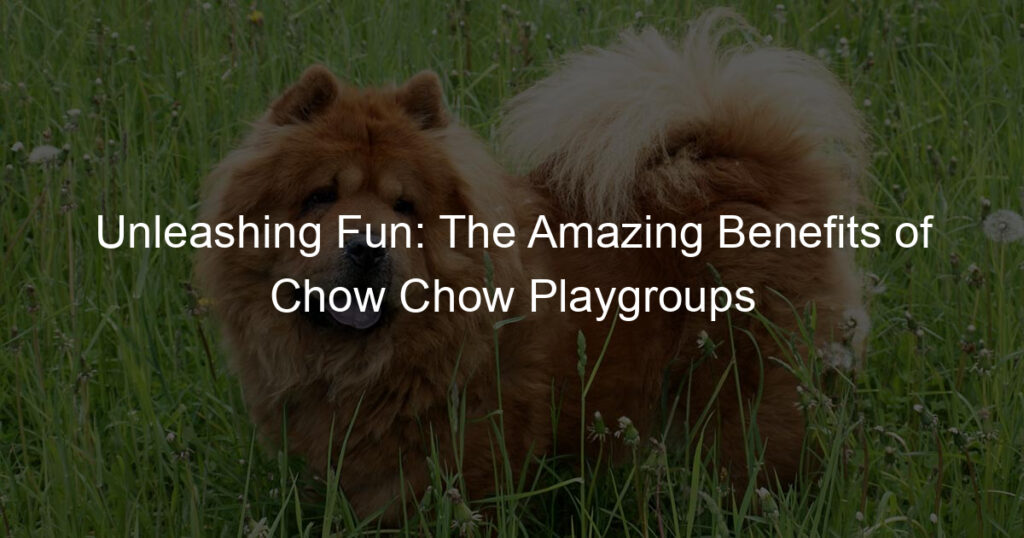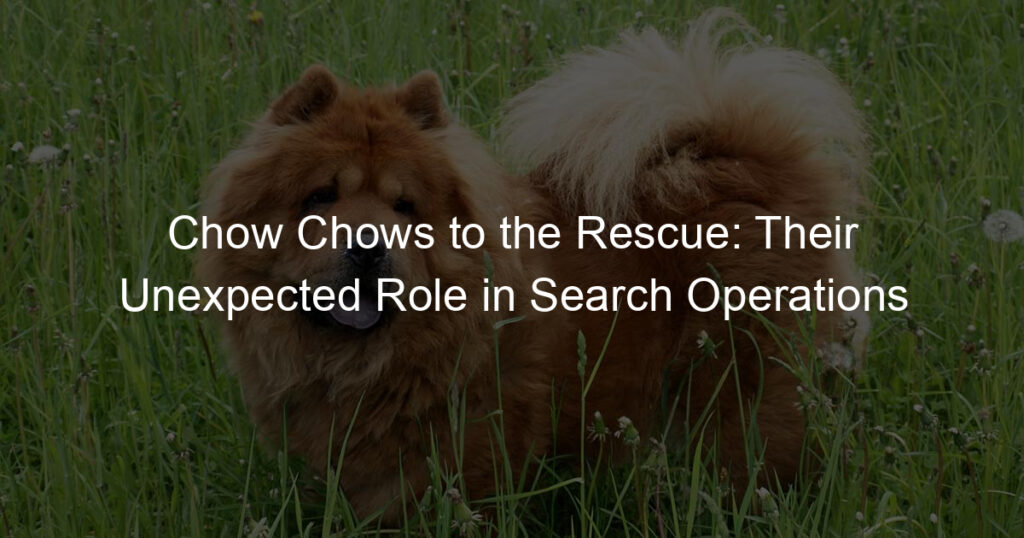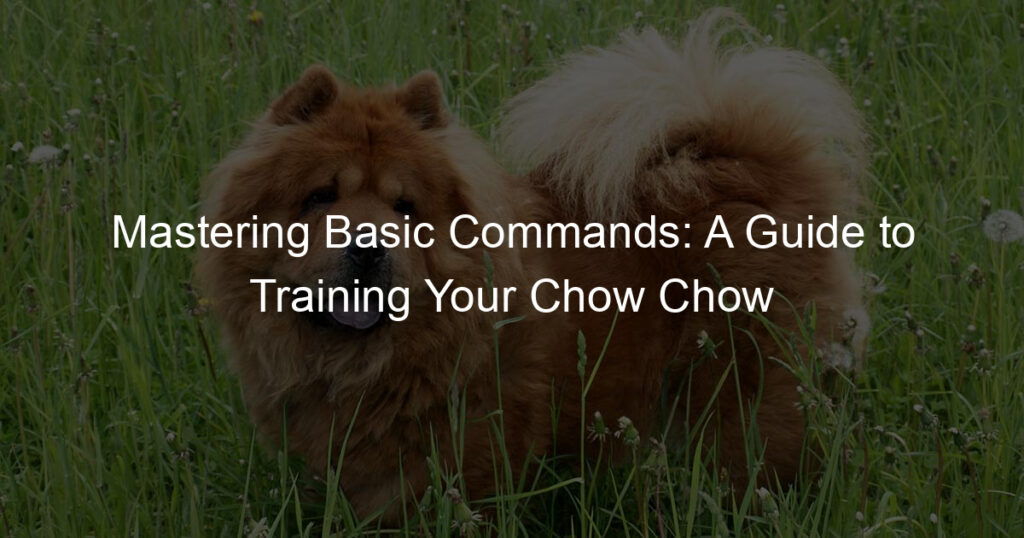
Introduction to Off-Leash Training for Chow Chow
Training your Chow Chow to walk off-leash can be a rewarding experience for both you and your furry friend. Not only does it give your dog a sense of freedom, but it also strengthens the bond between you. In this section, we will explore the importance of off-leash training and how the unique characteristics of the Chow Chow breed can affect the training process.
Off-leash training is not just about giving your dog freedom. It’s about teaching them to behave responsibly and respond to your commands even when they’re not physically tethered to you. This type of training can improve your dog’s confidence, mental stimulation, and overall happiness. It also allows you to have more control over your dog in potentially dangerous situations.
Chow Chows are known for their independence and stubbornness, which can make training a bit of a challenge. However, they are also intelligent and capable of learning with the right approach. Understanding your Chow Chow’s temperament and breed characteristics can help you tailor your training methods to their specific needs.
| Characteristic | Impact on Training |
|---|---|
| Independence | Chow Chows may prefer to explore on their own, making off-leash training essential for safety. |
| Stubbornness | This trait can make training more challenging, requiring patience and consistency. |
| Intelligence | Despite their stubbornness, Chow Chows are quick learners when motivated properly. |
By understanding the importance of off-leash training and the unique characteristics of your Chow Chow, you can create a training plan that works for both of you. In the following sections, we will provide tips and techniques to help you successfully train your Chow Chow to walk off-leash.
Chow Chow Training Tips
Training your Chow Chow can be a rewarding experience. With the right approach, you can help your furry friend to become a well-behaved member of your family. Here are some tips to prepare your Chow Chow for off-leash training.
Preparation for Off-Leash Training
Before you start off-leash training, it’s important to prepare your Chow Chow properly. This preparation involves two key steps:
-
- Establishing a strong foundation of basic commands
Training your Chow Chow to understand and respond to basic commands is the first step towards successful off-leash training. Start with simple commands like ‘sit’, ‘stay’, and ‘come’. These commands form the basis of all future training and are crucial for your dog’s safety and well-being. Practice these commands daily and reward your Chow Chow for correct responses to reinforce positive behavior.
-
- Ensuring your Chow Chow is comfortable with leash walking
Before you can train your Chow Chow to walk without a leash, you need to make sure they are comfortable walking with one. Start by taking short walks around your home or yard. Gradually increase the distance and duration of the walks as your Chow Chow becomes more comfortable. Remember, patience is key in this process. It might take some time, but with consistent practice, your Chow Chow will become more confident and comfortable on the leash.
Preparing your Chow Chow for off-leash training is a gradual process that requires patience and consistency. But with the right approach, you can help your furry friend to become a well-behaved member of your family.
Beginning Off-Leash Training
Starting off-leash training for your Chow Chow can be an exciting journey. This phase of training requires careful planning and execution. Two of the most crucial steps in this process are choosing the right environment and introducing the concept of off-leash walking. Let’s delve into these steps in detail.
-
- Choosing the Right Environment
Choosing the right environment for off-leash training is pivotal. It’s important to select a safe and controlled environment initially. This could be a fenced yard or a quiet park during off-peak hours. The environment should be free from distractions like traffic, other dogs, or too many people. This helps your Chow Chow to focus on the training and commands.
-
- Introducing the Concept of Off-Leash Walking
Introducing the concept of off-leash walking to your Chow Chow is the next big step. Start by letting your dog explore the chosen environment with the leash on. Gradually, you can drop the leash, allowing your dog to feel a sense of freedom while still having control. Once your Chow Chow seems comfortable, you can remove the leash completely. Remember, patience is key in this process.
It’s important to note that every dog is unique and may respond differently to off-leash training. What works for one Chow Chow may not work for another. Therefore, it’s crucial to observe your dog’s behavior and adapt the training accordingly. The goal is to ensure that your Chow Chow feels safe and confident while walking without a leash.
| Key Steps in Beginning Off-Leash Training |
|---|
| 1. Choose a safe and controlled environment |
| 2. Introduce the concept of off-leash walking gradually |
| 3. Observe your dog’s behavior and adapt the training accordingly |
Off-leash training can be a rewarding experience for both you and your Chow Chow. It not only enhances your bond but also gives your dog a sense of freedom and confidence. Remember, patience and consistency are key to successful off-leash training.
Techniques for Off-Leash Chow Chow Training
Training your Chow Chow to walk off-leash is a rewarding experience that requires patience, consistency, and the right techniques. One of the most effective methods is using positive reinforcement.
Using Positive Reinforcement
Positive reinforcement is a training method that rewards good behavior, encouraging your Chow Chow to repeat it. This method is not only effective but also strengthens the bond between you and your pet. Let’s explore how to use treats and praise effectively in this training.
-
- How to use treats effectively
Treats are a powerful tool in positive reinforcement training. They provide an immediate reward for your Chow Chow’s good behavior. Here are some tips on how to use them effectively:
-
-
- Use small treats: Small treats are perfect because they don’t fill up your dog too quickly, allowing for longer training sessions.
- Choose healthy options: Opt for healthy, low-calorie treats to avoid weight gain and health issues.
- Be timely: Give the treat immediately after your Chow Chow performs the desired behavior. This helps them associate the reward with the action.
- Using praise and affection as rewards
-
While treats are effective, they’re not the only form of positive reinforcement. Praise and affection can be just as powerful. Here’s how to use them:
-
- Be enthusiastic: When your Chow Chow behaves well, show your excitement with a cheerful voice and a big smile.
- Show physical affection: A pat on the head or a belly rub can also serve as a reward. This not only reinforces good behavior but also strengthens your bond.
- Be consistent: Consistency is key in training. Always reward good behavior to reinforce the positive action.
Consistency and Patience in Training
Training your Chow Chow to walk off-leash requires two key ingredients: consistency and patience. Let’s delve into these aspects and understand their importance.
-
- Keeping training sessions short and frequent
Chow Chows are intelligent dogs, but their attention span can be short. To keep them engaged and interested, it’s best to keep training sessions short but frequent. This approach allows them to absorb what they’ve learned and look forward to the next session. For instance, instead of one long 60-minute session, consider three 20-minute sessions spread throughout the day. This method ensures your Chow Chow doesn’t feel overwhelmed and retains the training better.
-
- Understanding the importance of patience in training
Patience is a virtue, especially when training your Chow Chow. Remember, every dog learns at its own pace. Some may grasp commands and cues quickly, while others may take a bit longer. It’s crucial not to rush the process. If your Chow Chow is taking longer to understand a command, it doesn’t mean they’re stubborn or untrainable. It simply means they need more time. Always maintain a calm and patient demeanor during training sessions. Your patience will eventually pay off when your Chow Chow confidently walks off-leash.
In conclusion, consistency in the frequency and duration of training sessions, coupled with a patient approach, can significantly improve your Chow Chow’s off-leash training outcomes. Remember, the goal is to build a trusting relationship with your Chow Chow, where they feel safe and confident to explore their surroundings off-leash.
Walking Chow Chow without Leash
Walking your Chow Chow without a leash can be a rewarding experience for both you and your furry friend. It allows your dog to explore their surroundings more freely and can strengthen the bond between you. However, transitioning to off-leash walking requires careful planning and patience.
Transitioning to Off-Leash Walking
Transitioning your Chow Chow to off-leash walking is a gradual process that requires consistent training and positive reinforcement. Here are some steps to help you through this process:
-
- Gradually increasing off-leash time
Start by allowing your Chow Chow to walk without a leash in a safe, enclosed area. Gradually increase the time they spend off-leash, always keeping a close eye on their behavior. Reward your dog for staying close to you and responding to your commands. This will help them understand that good things happen when they stay near you, even without a leash.
-
- Dealing with potential setbacks
Setbacks are a normal part of the training process. Your Chow Chow might get distracted or not respond to your commands at times. When this happens, don’t get frustrated. Instead, calmly put the leash back on and continue with your walk. Remember, patience and consistency are key to successful off-leash training.
Walking your Chow Chow without a leash can be a liberating experience for your pet and can also give you a sense of accomplishment. However, it’s essential to always prioritize your dog’s safety and well-being. Always observe your dog’s behavior and be ready to intervene if necessary. With time, patience, and consistent training, you and your Chow Chow can enjoy the freedom and benefits of off-leash walking.
Ensuring Safety During Off-Leash Walks
When it comes to off-leash walks with your Chow Chow, safety should always be your top priority. There are two key aspects to consider: choosing safe locations for off-leash walks and understanding when to use a leash for safety.
- Choosing safe locations for off-leash walks
Not all environments are suitable for off-leash walks. It’s crucial to choose locations that are safe and appropriate for your Chow Chow. Parks designated for off-leash dogs are a great choice as they are usually fenced and offer a secure environment where your dog can roam freely. It’s also important to consider the time of day. Early morning or late evening walks, when there are fewer people and distractions, can be a safer option.
- Understanding when to use a leash for safety
Even when your Chow Chow is well-trained for off-leash walks, there are situations where a leash may be necessary for safety. For instance, if you’re walking in a crowded area or near busy roads, it’s safer to keep your dog on a leash. Similarly, if your dog is showing signs of stress or fear, such as excessive panting or tail tucking, it’s best to leash them until they feel more comfortable.
In conclusion, ensuring safety during off-leash walks involves careful selection of locations and understanding when it’s safer to use a leash. Always remember, your Chow Chow’s safety and comfort should be your top priority.
Case Studies: Successful Chow Chow Off-Leash Training
Let’s dive into some real-life examples of successful off-leash training with Chow Chows. These case studies will provide practical insights and demonstrate how the right approach can yield positive results.
-
Case Study 1: Overcoming Initial Resistance to Off-Leash Training
Meet Bella, a 2-year-old Chow Chow who initially showed resistance to off-leash training. Bella’s owner, Jane, was determined to help her overcome this challenge. Jane started with short, controlled off-leash sessions in a fenced area. She used positive reinforcement techniques, rewarding Bella with treats and praise for every successful off-leash moment.
Over time, Bella started to associate off-leash time with positive experiences. Jane gradually increased the duration of these sessions and introduced new environments. After several months of consistent training, Bella is now comfortable and confident off-leash, even in unfamiliar settings.
-
Case Study 2: Transitioning from Leash-Dependent to Confident Off-Leash Walker
Next, we have Max, a 3-year-old Chow Chow who was heavily dependent on his leash. His owner, Mike, decided to transition him to off-leash walking. Mike began by incorporating leash-free time during their daily walks, allowing Max to explore while still under watchful supervision.
Mike also used a long-line leash to give Max a sense of freedom while maintaining control. This helped Max gain confidence and understand that he could explore without being physically connected to his owner. After consistent training and gradual exposure to different environments, Max successfully transitioned from a leash-dependent dog to a confident off-leash walker.
These case studies demonstrate that with patience, consistency, and the right techniques, Chow Chows can successfully be trained to walk off-leash. Remember, every dog is unique and may respond differently to training. It’s important to find what works best for your Chow Chow and to always prioritize their comfort and safety.
Conclusion: Enjoying the Benefits of Off-Leash Walking with Your Chow Chow
As we conclude this comprehensive guide on off-leash training for your Chow Chow, it’s essential to reflect on the numerous benefits that come with this training. Off-leash walking is not just about giving your dog freedom; it’s about building a stronger bond, trust, and understanding between you and your furry friend. It’s about the joy of seeing your Chow Chow confidently explore the world around them. Let’s delve into these benefits in more detail.
- Increased trust and bond between you and your Chow Chow
Training your Chow Chow to walk off-leash increases the level of trust between you two. Your dog learns to rely on your commands and guidance, while you learn to trust your dog’s instincts and behaviors. This mutual trust deepens your bond, making your relationship with your Chow Chow even more rewarding.
- The joy of seeing your Chow Chow confidently explore
There’s nothing quite like the joy of watching your Chow Chow confidently explore their surroundings. Off-leash walking allows your dog to satisfy their natural curiosity and explore at their own pace. It’s a delight to see your Chow Chow’s confidence grow as they navigate the world around them, all while knowing they can rely on you for guidance and safety.
In conclusion, off-leash walking with your Chow Chow is a rewarding experience that strengthens your bond, builds trust, and allows your dog to confidently explore their environment. Remember, patience and consistency are key in this training process. Happy training!

